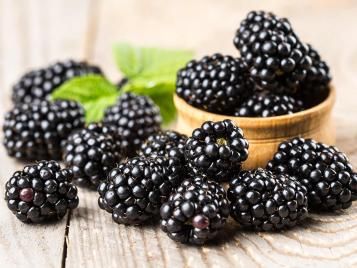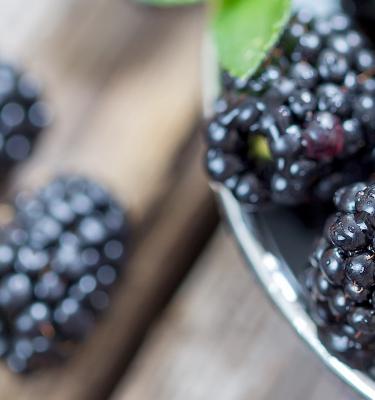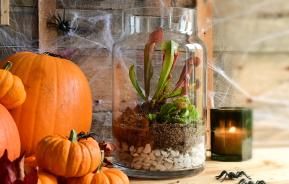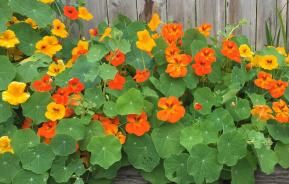Blackberries are sometimes overlooked for growing at home – but they shouldn’t be, as they are easy to grow and produce lots of luscious, tasty and juicy fruit with very little work and care.
Of course, if you don’t want to grow them yourself, you can always go pick them blackberries the wild - but there are lots of great varieties for home growing, which produce good yields of tasty, sweet fruit usually much bigger and sweeter than those of the wild ones found growing in hedgerows and other places.
If you don’t like the thought of having to deal with the sharp thorns, there are thornless varieties, such as Oregon Thornless. This is also very decorative, with deeply cut leaves that turn a rich red colour in autumn.
As well as blackberries, there are also several hybrid and related berries, including loganberries, tayberries, boysenberries and Japanese wineberry.
How to grow blackberries
Cultivation
Blackberries will grow in partial shade as well as full sun. Because they flower late in spring, they can be grown in frosty areas, where other fruit won’t grow particularly well. They need a good, moisture-retentive but well-drained soil with lots of added well-rotted organic matter, such as well-rotted manure, compost or soil conditioner, to hold moisture and nutrients.
Blackberries and hybrid berries are all self-fertile, so you only need to grow one plant and don’t need to worry about cross-pollination. They are vigorous plants, so need to be given plenty of room. Allow around 3m (10ft) between plants.
Blackberry varieties
There are several great varieties to grow, which produce large yields of excellent fruit:
- Fantasia Produces large blackberries with an excellent flavour, similar to the subtle flavour of the wild blackberry.
- Loch Ness Thornless and produce lots of large, well-flavoured berries from late summer until the first autumn frosts.
- Oregon Thornless Thornless stems and attractive foliage as well as good taste.
- Reuben Produces lots of very large, very sweet fruit.
- Silvan Prolific crops of large fruit.
Planting blackberries
Container-grown blackberries can be planted at any time of year, but autumn to spring are the best times.
Dig a hole 60x60cm (2x2ft) and 30cm (12in) deep. Add a layer of organic matter – such as compost or well-rotted manure – to the base of the hole and fork it in.
Place the roots in the planting hole and adjust the planting depth so that it is planted at the same depth as it was originally growing and the top of the roots are level with the soil surface.
Mix in more organic matter with the excavated soil and fill in the planting hole.
Water in well, apply a granular general feed over the soil around the tree and add a 5-7.5cm (2-3in) deep mulch of well-rotted garden compost or bark chippings around the root area.

How to care for blackberries
Water well during the first year whenever the weather is dry. In subsequent years, watering when the fruit is swelling may be needed if there are prolonged periods of dry weather.
Mulching around the plants in late spring will help to conserve soil moisture and keep down weeds.
For maximum crops, feed in early March with a general controlled-release feed.
Support and training
Blackberries need a good support system for the stems. Knock in sturdy 7.5cm (3in) 2.4m (8ft) high posts into the ground and stretch heavy-gauge wires horizontally between the posts at around 75cm (30in) 1.2m (4ft) and 1.5m (5ft) above ground level. Tie the stems to the wires as they grow with soft twine.
Alternatively, they can be trained along wires attached to a fence or even a shed. There are several ways of training the stems. As they fruit on stems produced the previous year, the easiest method is the one-way rope system. The new, current year’s stems are trained out and tied in on one side of the plant, while the stems produced the previous year, and which will carry the fruit, trained out on the other side.
Pruning
As soon as you finish harvesting, simply cut back the fruited stems down to ground level. Make sure you don't cut out the new/current year's stems as these will produce next year's fruit.
Harvesting
The fruit is ready for picking from mid-summer onwards. Pick it when it has developed a good colour and before it becomes too soft. With thorny varieties, it pays to wear gloves when picking!
| Flowering season(s) | Spring |
|---|---|
| Foliage season(s) | Spring, Summer, Autumn |
| Sunlight | Partial shade, Full sun |
| Soil type | Chalky, Clay, Loamy, Sandy |
| Soil pH | Neutral |
| Soil moisture | Moist but well-drained |
| Ultimate height | Up to 2.4m (8ft) |
| Ultimate spread | Up to 2.4m (8ft) |
| Time to ultimate height | 1-2 years |








